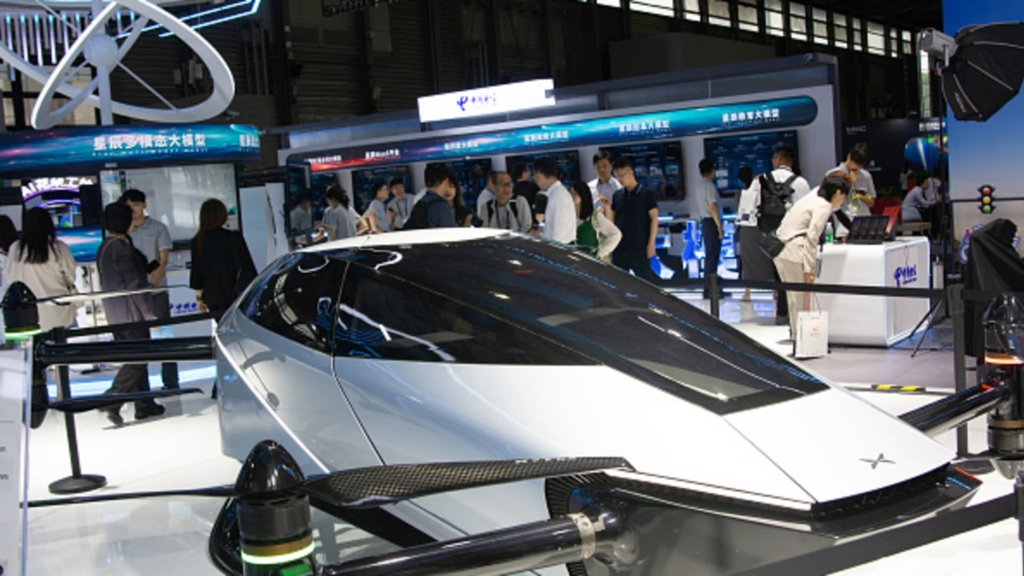According to Ehang’s Vice President, He Tianxing, flying taxis are set to become a feasible mode of transportation in China within the next three to five years. Ehang, a pioneer in autonomous aerial vehicles (AAVs), recently made headlines with its achievements in the sector.
This announcement follows Ehang’s success in obtaining a certification for “civil human-carrying pilotless aerial vehicles” from the Civil Aviation Administration of China, making it the first company to secure such approval alongside its joint venture partner, Hefei Heyi Aviation.
With this certification, Ehang is now positioned to commence commercial operations, which include offering paid rides and exploring various low-altitude applications for their vehicles.
Initially, the company’s AAVs will be deployed for tourism, enabling passengers to enjoy flights along specified routes in Guangzhou and Hefei by the end of June, as He revealed in a recent interview with Finance Newso.
As its tourist operations evolve, Ehang plans to gradually introduce air taxi services, with Hefei and Shenzhen identified as potential early adopters of this innovative mode of transport.
The EH216-S, Ehang’s certified aerial vehicle, is designed to operate without a pilot and is fully electric, featuring 16 propellers. It boasts a maximum speed of 130 kilometers per hour and can travel up to 30 kilometers on a single charge, according to details provided by the company.
He anticipates acquiring additional certifications for new operating locations this year and next, with cities such as Zhuhai, Shenzhen, Taiyuan, Wuxi, Wenzhou, and Wuhan likely to follow for tourist operations.
While he did not disclose fare amounts for the forthcoming rides in Hefei and Guangzhou, He expressed optimism that the costs would be competitive enough to attract a broader audience to experience the pilotless aerial vehicle.
The riding experience is intended to feel akin to being in a car, He noted, emphasizing that no safety gear such as helmets or parachutes would be required. Initially, the duration of rides is expected to range from roughly three to ten minutes.
As for international endeavors, He mentioned that there has been a noticeable interest from foreign partners since the company announced its certification, with expectations of expanding Ehang’s reach beyond China in the coming years.
China’s Pioneering Efforts
Industry analysts highlight that China’s move to permit commercial passenger AAVs underscores the nation’s commitment to innovation and leadership in the transport sector.
Dan Ives, global head of technology research at Wedbush Securities, described this development as a significant milestone, indicating that China is accelerating its technological advances.
Already recognized as a leader in electric vehicles and autonomous driving, China is now making strides in the flying taxi domain, identified by Ives as a pivotal next step in the automotive and technology industries.
Beijing laid the groundwork for unmanned aircraft regulations in June 2023, whereas the U.S. still lacks equivalent frameworks. In contrast, the Federal Aviation Administration has established general guidelines for “powered-lift” vehicles that encompass certain electric vertical takeoff and landing (eVTOL) aircraft.
eVTOLs are designed to transport passengers vertically without the need for runways; however, current FAA regulations focus primarily on those with human pilots.
Tu Le, founder of the consultancy Sino Auto Insights, remarked that the U.S. lags behind China and the EU in the eVTOL sector, attributing this to overly stringent regulations, industry lobbying, and political dynamics.
Meanwhile, China’s government has been actively encouraging eVTOL advancements as part of its initiative to develop a “low-altitude economy,” which aims to stimulate economic activities below 1,000 meters. This priority includes everything from delivery drones to helicopter shuttle services.
Recent policy reports have committed to fostering this low-altitude economy, projecting it to become a key driver in sectors such as air tourism, aerial sports, and consumer drone use, as highlighted in a recent government action plan.
By 2025, the low-altitude economy is expected to reach a value of 1.5 trillion yuan ($205 billion), with projections indicating it may nearly double by 2035, according to a report by Hurun research group.
Intensifying Competition
Numerous companies have emerged in response to the high-tech future now becoming a reality. Major players in the electric vehicle manufacturing sector, including GAC, Geely, and Xpeng, have invested significantly in aerial vehicle development.
Xpeng’s newest division, Xpeng Aero HT, successfully executed its first flight of the “Land Carrier,” a unique combination of a van and a two-seat quadcopter, as reported to Finance Newso.
Xpeng Aero HT is poised to host a pre-sale launch event and is on track to complete its mass production factory later this year. The company aims to secure airworthiness certification by the close of 2024.
Recently, XPeng Motors CEO He Xiaopeng announced plans to mass-produce flying cars by 2026, banked on supportive policies boosting the low-altitude economy.
Nonetheless, despite China’s leading position in eVTOL regulations, it will inevitably face competition from international firms eager to tap into the future market for aerial vehicles.
Global entities like Boeing, Airbus, and Embraer are gearing up to leverage forthcoming demand for flying cars, while various U.S.-based startups, including Joby Aviation, Archer, and Wisk, are also poised to introduce commercial air taxi services in the short term.
According to Dan Ives, the global market for electric vertical takeoff and landing (eVTOL) aircraft could expand to $30 billion over the next decade.


























